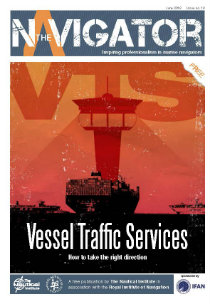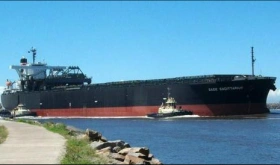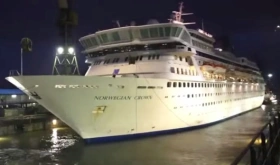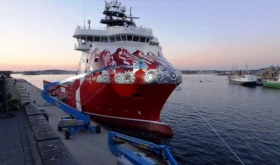A number of vessels have reported temporary loss of steering when reducing ship’s speed, which has resulting in unintended changes in the ship’s direction. This incident information refers to a fully loaded tanker approaching port under pilotage, lost steering and grounded. As a result the vessel suffered bottom damage.
The vessel was equipped with a controllable pitch (CP) propeller and a flap rudder, see figure below. No technical malfunctions to the steering gear or rudder systems were detected during the investigation. However, it was concluded that under certain circumstances the rudder effect may be temporarily lost, as the water flow around the rudder might change rapidly, with a resulting negative effect to the steering capability.
Photo above: Flap rudder and CP propeller.
If the vessel is “straight line unstable” (meaning that it will always tend to turn either P or S when no rudder is applied), see figure below, no rudder angle is needed to initiate a turn, while a large rudder angle is needed to check a turn (ref. the right figure below showing the relationship between rudder angle and yaw rate (ROT) for an unstable vessel). As larger rudder angles are needed to check a turn there is less “reserve rudder” available if the rudder force should be reduced.
Figure above: Relationship between rudder angle and yaw (turn) rate for Straight-line stable/unstable vessel.
It has been proven in practice, that close to zero pitch the propeller blades will form a disc which shields the rudder off from free water flow.
If the ship’s speed is reduced by altering the propeller pitch the effect of the rudder (rudder force) will be reduced or possibly even temporarily lost. The unstable ship will instantly build up a yaw rate, which is not possible to check with the obtainable rudder force.
The above effect is considered to be more or less independent of the type of rudder.
Lessons to be learned
- If available the pilot cards and ship’s manoeuvring booklets should be amended to make captains, watch officers and pilots aware of a possible shielding effect of the CP-propeller to rudder.
- To retain best possibilities for steering in restricted areas constant RPM control mode of the main engine should be avoided.
- Any automatic ship speed control applying propeller pitch setting should be avoided in all narrow waters. In particular use of reference to ground speed increases risk for a temporary sudden loss of steering capability in case ships speed increases suddenly due to current, or errors in reference speed occurs.
- A speed reduction well in advance of the turn will provide the possibility for a “kick ahead with propeller” to obtain proper effect of the rudder for steering.
Note: The picture at the beginning of this post is not an actual picture of the incident discussed within the post.
Source: DNV
















Leave a Comment